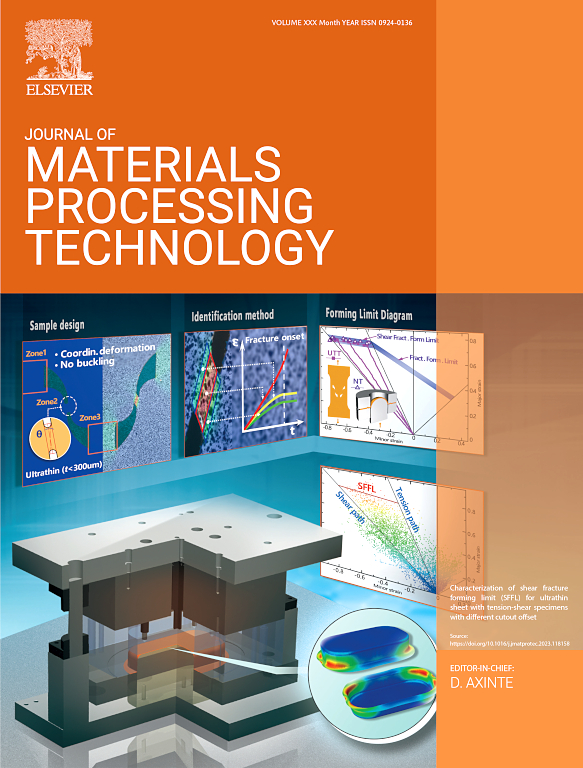Nano/microstructures and thermoelectric properties of silicon germanium manufactured using laser powder bed fusion
IF 6.7
2区 材料科学
Q1 ENGINEERING, INDUSTRIAL
Journal of Materials Processing Technology
Pub Date : 2025-01-30
DOI:10.1016/j.jmatprotec.2025.118749
引用次数: 0
Abstract
Silicon germanium alloys are high-temperature thermoelectric materials that convert heat to electricity at ∼1000 °C. Yet, the current application of silicon germanium-based thermoelectric devices is limited to niche areas due to unwieldy manufacturing processes that limit the shape of thermoelectric materials to simple cuboids and thus limit power generation potential. Laser powder bed fusion of thermoelectric materials offers the potential to fabricate freeform shapes and induce nano- and microstructures favorable for thermoelectric energy conversion. Here, we successfully fabricated undoped Si50Ge50 and Si80Ge20 parts using laser powder bed fusion and investigated the resulting structure and properties. The undoped Si80Ge20 alloy had a maximum thermoelectric figure of merit, ZT, of 0.06 at 400 °C. The laser manufactured parts exhibited p-type behavior with a measured Seebeck coefficient that changed based on the stoichiometry. Si50Ge50 reached a Seebeck coefficient of 588 µV/K at 50 °C while Si80Ge20 reached 513 µV/K at 400 °C. Oxidation during processing contributed to balling and lack-of fusion defects and was alleviated in single melt lines by washing the powder in hydrofluoric acid prior to laser processing. Processing related defects remained in bulk samples fabricated with acid treated powder, suggesting that the processing atmosphere is a primary cause of processing-induced defects. This work advances the processing of silicon germanium alloys for thermoelectric devices by uncovering the structures and thermoelectric properties of silicon germanium processed via laser-based additive manufacturing.
求助全文
约1分钟内获得全文
求助全文
来源期刊

Journal of Materials Processing Technology
工程技术-材料科学:综合
CiteScore
12.60
自引率
4.80%
发文量
403
审稿时长
29 days
期刊介绍:
The Journal of Materials Processing Technology covers the processing techniques used in manufacturing components from metals and other materials. The journal aims to publish full research papers of original, significant and rigorous work and so to contribute to increased production efficiency and improved component performance.
Areas of interest to the journal include:
• Casting, forming and machining
• Additive processing and joining technologies
• The evolution of material properties under the specific conditions met in manufacturing processes
• Surface engineering when it relates specifically to a manufacturing process
• Design and behavior of equipment and tools.
 求助内容:
求助内容: 应助结果提醒方式:
应助结果提醒方式:


